The ColoHealth Health & Wealth Newsletter
May 2021
Vol. 11, Issue 6
Spring Retirement Check-In: Are You Maximizing Your Tax-Favored Investments?
The math here is not that complicated: The more money that is in your retirement accounts, the more earning power that they have. When it comes to tax-deferred accounts like HSAs, IRAs, and 401(k)s, the benefit of maximizing your annual contribution is unquestionable.
Contribute the maximum amount to your 401K and IRA
If you’re really looking to make a big impact on your retirement savings, make sure that you’re maximizing your contributions year after year. You want to begin with your primary retirement accounts, which for most people would be the 401(k) and IRA).
Always take advantage of any match benefits that are being offered by your employer, as these can significantly boost your portfolio’s earning power.
Don’t forget your Health Savings Account (HSA)
Anyone who is enrolled in a high deductible, HSA-qualified health plan should be making their maximum contribution every year. The family HSA contribution limit is $7200, which is pre-tax money that can be used to pay for health expenses down the line.
Underfunding your HSA contributions is a common mistake. But when you consider that the average couple is on track to spend about $300K on health costs in retirement, the idea of having a specialized, tax-free health account is a no-brainer.
At the very least, your HSA funds will insulate your long-term retirement savings from emergency health costs, like an unexpected trip to the ER.
Make sure you have guaranteed income
One of the most important things to remember about tax-favored retirement accounts is that they are still vulnerable to market conditions. This means that it’s not always possible to predict how much these accounts will either earn or lose over time.
One method of insulating your retirement plans from market conditions is with either an annuity or a self-funded pension. This is a way of guaranteeing a portion of your savings in a way that pays you out over time.
But the real advantage of an annuity: You’ll have a guaranteed payment for the rest of your life. This means that no matter what happens, you’ll be able to cover the essentials.
Common questions about tax-favored investments:
Q: Can I contribute to both an IRA and a 401k in the same year?
A: Yes, it’s possible to contribute to both a 401(k) and an IRA in the same tax year. This is actually pretty common, and not a bad cornerstone for your retirement. However, your modified adjusted gross income (MAGI) might play a role in limiting how much of your contribution is tax-deductible.
Q: What is a tax-deferred investment account?
A: With a tax-deferred account, like an IRA, 401(k), or HSA, your contribution to the account comes from pre-tax money. For example, your 401(k) or HSA contributions are deducted from payroll before taxes are applied.
With IRAs and 401(k)s, you don’t have to pay taxes on this income until you withdraw it. This means more money in the account, which leads to higher interest and dividends.
With a Health Savings Account (HSA), you never have to pay taxes on withdrawals, as long as it’s being used for qualified health expenses.
Q: What is the maximum annual contribution for 401(k)s / IRAs / HSAs?
A: For 2021, the maximum contribution for IRAs is $6,000 per year, or $7,000 if you’re 50 or older.
The maximum contribution for 401(k)s much higher at $19,500 per year, or $26,000 if you’re 50 or older.
HSAs have a maximum annual contribution of $3,600 for individuals and $7,200 for families.
Ready to discuss your long-term retirement plans?
The closer you get to retirement age, the more important it is that your money is where it needs to be, earning the interest and dividends that you will need to stay healthy and happy.
If you’re ready to dive deeper into your retirement strategy, give us a call. We can help you perform the careful analysis needed to make sure that you won’t outlive your money. But more than this, our planning tools will give you the peace of mind that your loved ones will always be financially secure, no matter what happens.
You can connect with a Personal Benefits Manager by calling 800-913-6381, or click here to sign up for a free consultation.
To Your Health and Wealth,

Wiley P. Long III
President- ColoHealth
The ColoHealth Health & Wealth Newsletter is published monthly and emailed to subscribers at no charge. Subscribe now to stay on top of the critical information you need to know about health insurance, healthshare plans and managing your finances to achieve financial security.
© 2021 | Legal Information


